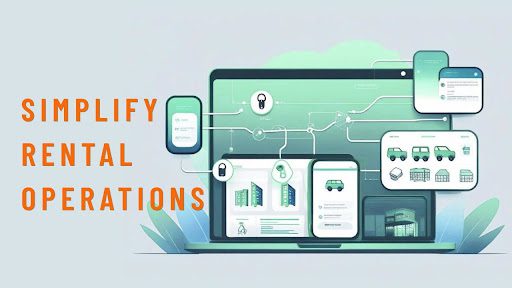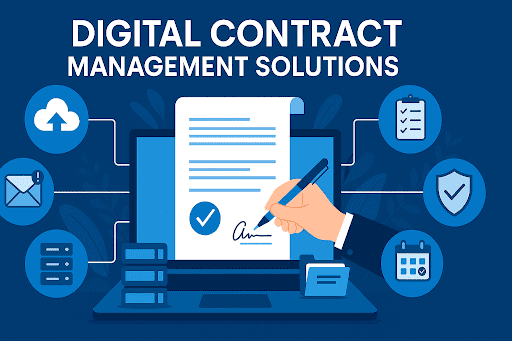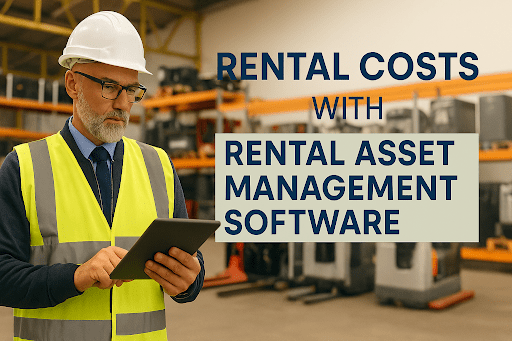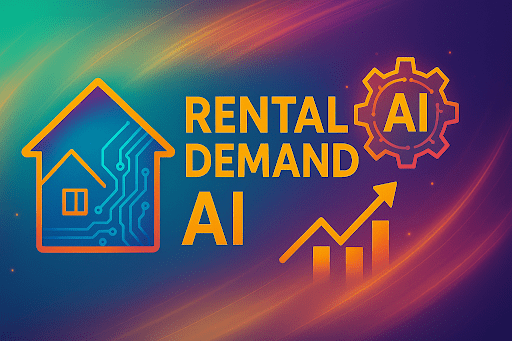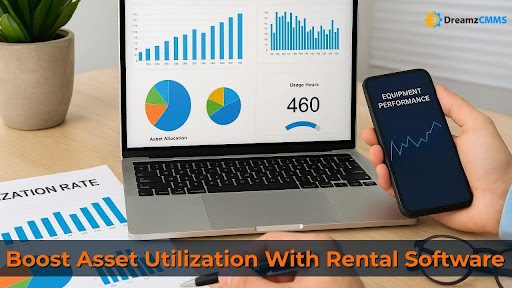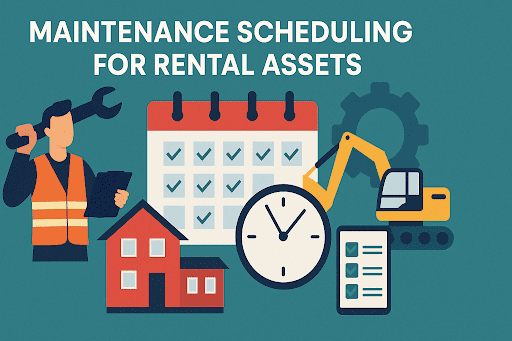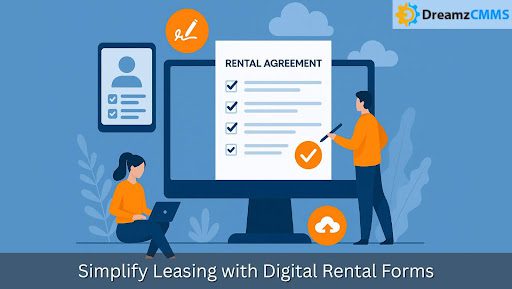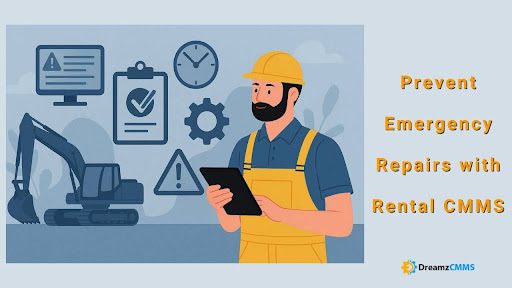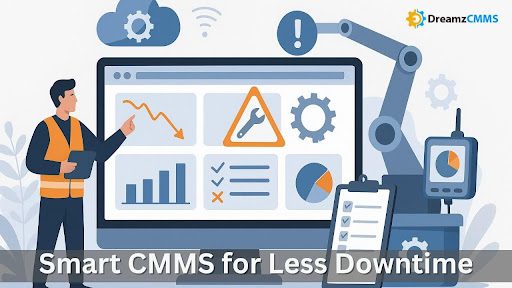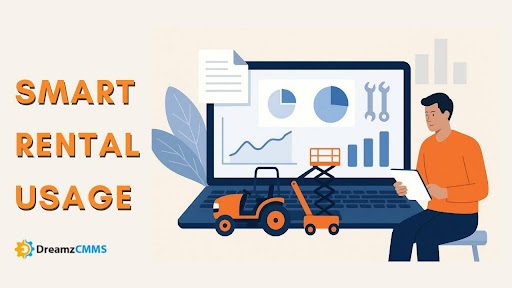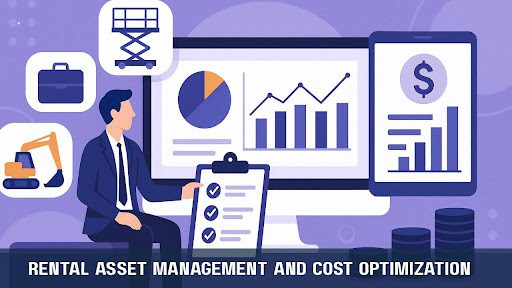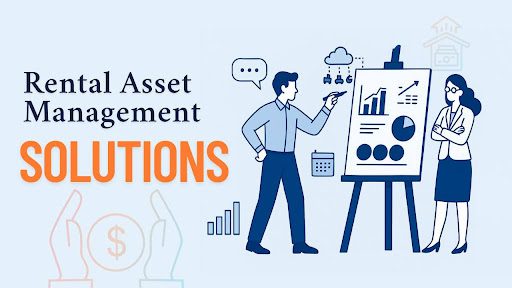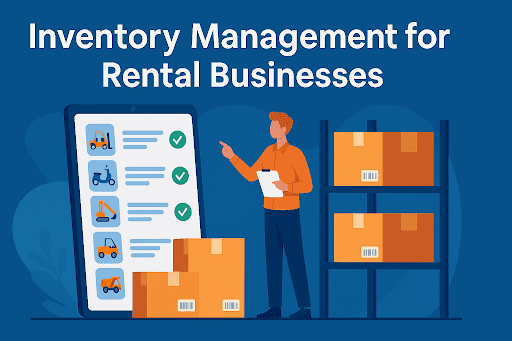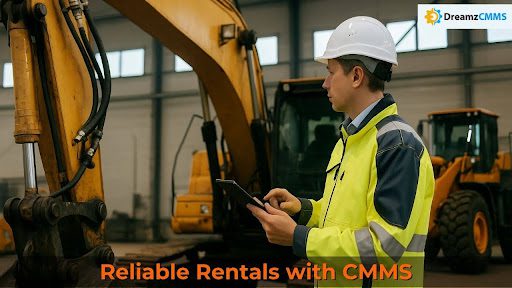 BACK TO Blog
BACK TO Blog
Asset Rental Management
Rental Asset
The rental industry's high competition demands more than just quality assets for profitability. A successful rental pricing model depends on strategic organization to link operational expenses with market dynamics and customer market needs. Your bottom line depends directly on the rental pricing strategy you choose for heavy machinery and vehicles
- June 25, 2025
- DreamzCMMS Team
- 10 minutes read
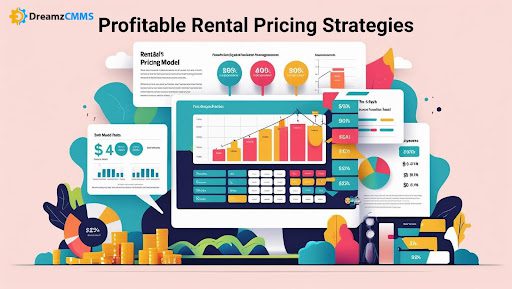
- June 25, 2025
- DreamzCMMS Team
- 10 minutes read
The rental industry's high competition demands more than just quality assets for profitability. A successful rental pricing model depends on strategic organization to link operational expenses with market dynamics and customer market needs. Your bottom line depends directly on the rental pricing strategy you choose for heavy machinery and vehicles and IT equipment rentals.
This article examines current equipment rental pricing approaches as well as modern pricing systems and explains how data analytics and sophisticated tools can help maximize rental income. The blog investigates all necessary steps required to create sustainable profit through pricing methods starting from dynamic pricing systems for rental businesses to automated rental rate modifications.
Maximize Asset Uptime with Proactive Maintenance
Keep Your Rental Equipment Running Smoothly
Prevent breakdowns, reduce downtime, and extend asset life with a centralized platform built for rental businesses.
Explore Asset Maintenance Management Software
A rental pricing system requires strong foundation to operate effectively
A well-designed rental pricing model provides structure and predictability. Your business needs this pricing method to determine customer billing methods including hourly, daily or asset usage while maintaining profitability alongside competitive pricing.
Key benefits include:
- Maximizing rental ROI and pricing analysis
- Enhancing asset utilization
- Boosting customer trust with transparent pricing
- Real-time rental price adjustments enable your business to respond quickly to market fluctuations.
To make sure your pricing decisions match your available assets and supply chains you should implement smart Inventory Management for Rental Businesses which enables dynamic asset distribution.
A robust Facility Management Software system which integrates multiple rental locations and on-site needs management becomes easier when used in combination with the right tools for rental management.
Types of Equipment Rental Pricing Strategies
1. The Rental Industry relies on Cost-Plus Pricing as one of its oldest pricing methods that continues to be relevant
Cost-plus pricing remains one of the oldest pricing methods that determines rates by adding a fixed margin to operational costs. The pricing approach safeguards expenses yet fails to account for market fluctuations together with customer perceptions of asset worth.
2. Value-Based Pricing
The pricing approach focuses on determining the worth that equipment delivers to customers. High-end equipment including advanced models and performance-oriented machinery allows rental operators to set elevated price points. The pricing model works effectively for equipment that delivers improved efficiency along with faster operation and superior safety features.
Find more about digital pricing and billing automation in Digital Contract Management Solutions.
3. Dynamic Pricing for Rental Businesses
This pricing approach adjusts its rates through current factors that include:
- Equipment availability
- Seasonal demand
- Location and delivery radius
- Duration of rental
A dynamic pricing system for rental businesses enables businesses to maximize revenue during busy times while minimizing asset waste in off-peak periods. A hybrid pricing engine uses real-time asset availability to determine correct rates and performs invoice proration and asset availability adjustments. The pricing system improves internal operations and provides customers with better understanding of pricing structures.
4. Usage-Based Pricing for Rental Equipment
The pricing strategy known as metered or pay-as-you-use allows customers to pay for machine hours or actual usage time or mileage. The rental equipment pricing model based on usage creates fair pricing for construction machinery rentals and vehicle rentals because it establishes clear accountability standards.
5. Seasonal Pricing Models for Rentals
The pricing structure changes according to the time period in this model. For instance:
- Higher prices in peak summer for air conditioners
- Winter discounts for landscaping equipment
Seasonal rental pricing strategies help rental businesses achieve their highest revenue potential during busy periods while enabling faster equipment turnover during less active times.
6. Subscription or Recurring Rental Pricing
This pricing model suits B2B and office equipment rentals by charging customers a set monthly fee. This pricing model produces consistent financial streams and maintains continuous business relationships with clients.
7. Tiered and Hybrid Pricing Automation
The rental service provides customers with a dual pricing system, which includes:
- $500/day for 1–3 days
- $450/day for 4–7 days
- $400/day beyond 7 days
A hybrid pricing engine will determine the correct rate while performing invoice proration and adjusting prices according to asset availability. The pricing system delivers enhanced operational efficiency together with improved customer understanding of prices. Large infrastructure or project-based environments benefit from having an integrated Construction Project Management Software system that offers operational visibility and synchronizes scheduling with pricing decisions.
Real-World Use Cases for Strategic Rental Pricing
Case 1: Heavy Equipment Rentals
A construction equipment rental business uses demand forecasting data to determine peak rental periods and implements seasonal price adjustments for their rentals. The company provides discounted packages of accessories to their customers during low-season periods to boost equipment rental turnover.
Their equipment rental business uses Maintenance Scheduling for Rental Assets to manage downtime effectively thus ensuring equipment remains available for rental while receiving proper pricing.
Case 2: Event Rental Business
The party equipment provider operates dynamic pricing for rental businesses which sets higher rental fees during wedding seasons and holidays. The rental pricing dashboard for their managers allows them to detect market patterns while forecasting their inventory requirements.
Case 3: IT Hardware Rental Firm
The company implements pricing strategies based on actual usage for laptops and servers. The rental system bills customers based on machine usage time while using embedded software for tracking purposes. The AI system provides price discounts for long-term clients through ROI and pricing analysis while maintaining high profitability levels.
Rental demand forecasting alongside pricing operates through the following process
Rental demand forecasting with pricing utilizes data-driven methods to predict upcoming rental patterns by analyzing:
- Past rental data
- Market activity
- Industry cycles
- Regional economic factors
Businesses can use forecasting to plan ahead and modify their prices while managing asset supply to meet market demand. When forecasting tools connect to a rental pricing dashboard for managers they produce useful information that helps with:
- Adjusting inventory
- Creating promotional pricing
- Managing rental duration tiers
Tools That Optimize Your Rental Rates
The right pricing model for different product lines needs rental pricing optimization tools to function properly. Here are some powerful categories:
1. Rental Rate Optimization Tools
These tools automate pricing adjustments by analyzing historical and real-time data. The system generates optimal rates through a combination of usage patterns and asset age and competitive analysis.
2. Rental Pricing Dashboard for Managers
A centralized dashboard provides visibility into:
- Top-performing equipment
- Least rented assets
- Price performance across categories
- Breakeven points for each rental unit
The system enables managers to automate rental rate changes which decreases both time requirements and pricing mistakes.
3. Data-Driven Pricing for Rental Services
Companies can establish data-driven pricing for rental services through the collection of usage information from IoT sensors and telematics systems. These analytics provide clear insights which help organizations create individualized pricing strategies to increase customer retention.
Rental companies need to establish prices which compete effectively to remain ahead in the market
Rental companies must find a pricing balance that provides value to customers without compromising their profitability. The following strategies will help you refine your pricing strategy:
- Benchmark against competitors using regional data
- Offer tiered pricing for different rental durations
- Combine flat-rate and usage-based pricing
- Use AI-based rental pricing systems to react quickly to market shifts
- Highlight your USP—such as support, delivery, or uptime guarantee—to justify premium rates
Companies that deliver exceptional customer experiences with additional value-added services can charge higher prices than basic price-focused competitors.
How Technology Transforms the Rental Pricing Model
Every industry experiences transformation due to digital change and the rental business stands as no exception. Rental operations operate in the present using the following power sources:
1. IoT-Driven Usage Monitoring
The ability to track equipment usage in real-time enables pricing systems to calculate rentals according to actual consumption amounts. Your business can precisely track and invoice run-time hours of generators and miles of driving through our system.
2. Rental Pricing Software Integration
The platforms handle different pricing systems while producing automatic bills and supporting flexible pricing rule adjustments.
Use tools like Asset Rental Management Software to handle:
- Equipment lifecycle management
- Smart rental pricing models
- Real-time customer quote generation
- Inventory-linked pricing recommendations
3. AI-Driven Insights
Machine learning systems detect recurring patterns in business data through their analysis.
- Rental trends by region
- Pricing sensitivity per asset type
- Predictive maintenance-triggered pricing
Rental pricing systems utilizing AI technology use insights obtained from these data sources to enhance profitability through continuous learning.
Building a Profitable Rental Pricing Strategy: Step-by-Step
- Evaluate Asset Lifecycle Costs
Asset pricing needs to include all expenses that result from depreciation and maintenance as well as downtime and storage.
- Determine Target ROI
The set pricing should lead to your preferred return on investment before the asset reaches its end of life.
- Segment Customers
Enterprise customers receive different pricing rates than individual renters.
- Apply Mixed Pricing Models
The rental industry can benefit from pricing approaches that combine cost-plus, value-based and usage-based methods.
- Use Forecasting Tools
Rental forecasting tools which include pricing functions enable businesses to respond to changes in market demand.
- Monitor Results Continuously
Rental ROI and pricing analysis tools help identify assets that both deliver high and low returns.
Future of Rental Pricing: What’s Next?
The rental industry faces imminent changes in its pricing creation and management systems and delivery processes because of advancing technologies.
1. Rental-as-a-Service (RaaS)
RaaS models will gain popularity because businesses will subscribe to equipment usage instead of purchasing it outright to reduce capital spending while ensuring equipment stays current.
2. Hyper-Personalized Pricing
The integration of AI with CRM systems will lead to customized pricing structures which consider historical customer data and rental patterns and performance feedback. Automatic loyalty pricing and premium model upsell opportunities are available to customers who return for additional rentals.
3. Sustainability-Linked Pricing
The adoption of ESG principles by consumers will lead to higher prices for rental assets that demonstrate energy efficiency and receive eco-certifications. Businesses should develop innovative pricing schemes for sustainable asset rentals through environmental performance metrics.
4. Geo-Pricing Models
The implementation of pricing variability based on geographical information will start to emerge in businesses. Higher prices occur in urban areas with high demand but rural areas use discounts to boost rental activity.
Data-driven pricing for rental services needs a foundation based on automation and analytics and IoT connectivity to support these innovative changes.
Deep Dive: Technology-Enabled Pricing Features
Through Asset Rental Management Software businesses managing extensive equipment rentals can automate their rate and billing processes and asset condition updates which enables smooth integration of various pricing models with customer portals and inventory systems.
Final Thoughts
A profitable rental business requires its pricing model to serve as its fundamental base. The previous method of using flat-rate pricing is no longer sufficient. Modern businesses need to adopt the following:
- Dynamic pricing for rental businesses
- Usage-based pricing for rental equipment
- Rental demand forecasting and pricing
- Smart, AI-based rental pricing systems
By integrating automated rental rate updates, data-driven decision-making, and modern software platforms, rental businesses can scale profitably while keeping customers satisfied and competitive threats at bay.
Experience Smarter Equipment Rental Management
Streamline pricing, automate asset tracking, and manage your rental business with cutting-edge software built for operational excellence.
Ready for More?
Talk to one of our CMMS experts and see how DreamzCMMS can simplify your maintenance operations.
Book a free consultation